SCI Publications
2003
C.E. Goodyer, M. Berzins, P.K. Jimack, L.E. Scales.
“Grid-Based Numerical Optimisation in a Problem Solving Environment,” In Proceedings of Second UK E-Science All-Hands Meeting, Nottingham, UK, Edited by S.J. Cox, pp. 854--861. 2003.
ISBN: 1-904425-11-9
M.E. Hubbard, M. Berzins.
“A Positivity Preserving Finite Element Method for Hyperbolic Partial Differential Equations,” In Computational Fluid Dynamics 2002, Edited by S. Armfield and P. Morgan and K. Srinivas, Springer-Verlag, pp. 205--210. 2003.
C.H. Leung, M. Berzins.
“A Computational Model for Organism Growth based on Surface Mesh Generation,” In Journal of Computational Physics, Vol. 188, No. 1, pp. 75--99. 2003.
2002
L.J.K. Durbeck, M. Berzins.
“Unstructured Tetrahedral Mesh Quality Analysis Using an Interactive Haptic and Visual Interface,” In Comp. & Vis. Sci., Vol. 5, No. 3, Springer-Verlag, pp. 179--192. 2002.
C.E. Goodyer, M. Berzins.
“Eclipse and Ellipse: PSEs for EHL Solutions using IRIS Explorer and SCIRun,” In Proceedings of the International Conference on Computational Science (ICCS) 2002, Amsterdam, The Netherlands, Vol. 2329, Edited by P.M.A. Sloot and C.J.K. Tan and J.J. Dongarra and A.G. Hoekstra, Springer Berlin, pp. 523--532. 2002.
C.E. Goodyer, J. Wood, M. Berzins.
“A Parallel Grid Based PSE for EHL Problems,” In Applied Parallel Computing. Advanced Scientific Computing: 6th International Conference, PARA 2002, Proceedings, Espoo, Finland, Vol. 2367, Edited by J. Fagerholm and J. Haatja and J. Jarvinen and M. Lyly and P. Raback and V. Savolainen, Springer Lecture Notes in Computer Science, pp. 521--530. 2002.
P.K. Jimack, R. Mahmood, M.A. Walkley, M. Berzins.
“A Multilevel Approach for Obtaining Locally Optimal Finite Element Meshes,” In Adv. Eng. Soft., Vol. 33, pp. 403--415. 2002.
I. Lagzi, A.S. Tomlin, T. Turanyi, L. Haszpra, R. Meszaros, M. Berzins.
“Modelling Tropospheric Ozone Formation in Hungary Using an Adaptive Gridding Method,” In Proceedings from the EUROTRAC-2 Symposium 2002, Edited by Garmisch-Partenkirchenand P.M. Midgley and M. Reuters, 2002.
I. Lagzi, A.S. Tomlin, T. Turanyi, L. Haszpra, R. Meszaros, M. Berzins.
“Modeling Photochemical Air Pollution in Hungary Using an Adaptive Grid Model,” In Air Pollution modeling and Simulation - Proc.2nd International Conference on Air Pollution Modeling and Simulation (APMS'2001), pp. 264--273. april, 2002.
ISBN: 3540425152, 9783540425151
M. Walkley, P.K. Jimack, M. Berzins.
“Anisotropic Adaptivity for Finite Element Solutions of 3-D Convection-Dominated Problems,” In Int. J. Numer. Meth. Fluids, Vol. 40, No. 3-4, pp. 551--559. 2002.
M. Walkley, M. Berzins.
“A finite element model for the two-dimensional extended Boussinesq equations,” In International Journal for Numerical Methods in Fluids, Vol. 39, No. 10, pp. 865--885. 2002.
2001
I. Ahmad, M. Berzins.
“MOL Solvers for Hyperbolic PDEs with Source Terms,” In Mathematics and Computers in Simulation, Vol. 56, pp. 1115--1125. 2001.
M. Berzins, A.S. Tomlin, S. Ghorai, I. Ahmad J.Ware.
“Unstructured Mesh Adaptive Mesh MOL Solvers for Atmospheric Reacting Flow Problems,” In The Adaptive Method of Lines, Note: invited chapter, Edited by A. Vande Wouwer and Ph. Saucez and W. Schiesser, CRC Press, Boca Raton, Florida, USA., pp. 317--351. 2001.
ISBN: 1-58488-231-X
M. Berzins, L. Durbeck.
“Unstructured Mesh Solvers for Hyperbolic PDEs with Source Terms: Error Estimates and Mesh Quality,” In Godunonv Methods: Theory and Applications, Note: Proc. of Godunov Conf. October 18-22, Oxford UK, Edited by E. Toro et al., Kluwer Academic/Plenum, pp. 117--124. 2001.
M. Berzins.
“Modified Mass Matrices and Positivity Preservation for Hyperbolic and Parabolic PDEs,” In Communications in Numerical Methods in Engineering, Vol. 17, pp. 659--666. 2001.
C.E. Goodyer, R. Fairlie, M. Berzins, L.E. Scales.
“Adaptive Techniques for Elastohydrodynamic Lubrication Solvers,” In Tribology Research: From Model Experiment to Industrial Problem, Proceedings of the 27th Leeds-Lyon Symposium on Tribology, Edited by G. Dalmaz et al., Elsevier, 2001.
C.E. Goodyer, R. Fairlie, M. Berzins, L.E. Scales.
“Adaptive Mesh Methods for Elastohydrodynamic Lubrication,” In ECCOMAS CFD 2001: Computational Fluid Dynamics Conference Proceedings, Institute of Mathematics and its Applications, 2001.
ISBN: 0-905-091-12-4
I. Lagzi, A.S. Tomlin, T.Turanyi, L.Haszpra, M.Berzins.
“The Simulation of Photochemical Smog Episodes in Hungary and Central Europe Using Adaptive Gridding Models,” In Lecture Notes in Computer Science (LCNS), Computational Science - ICCS 2001, Vol. 2074/2001, Springer Berlin / Heidelberg, pp. 67--76. 2001.
ISBN: 978-3-540-42233-4
M. Walkley, P.K. Jimack, M. Berzins.
“Mesh Quality for Three-dimensional Finite Element Solutions on Anisotropic Meshes,” In Proceedings of FEM3D, GUKUTO International Series, Mathematical Sciences and Applications, Vol. 15, pp. 310--321. 2001.
M. Walkley, P.K. Jimack, M. Berzins.
“Anisotropic Adaptivity for Finite Element Solutions of 3-D Convection-Dominated Problems,” In Numerical Methods for Fluid Dynamics VII, Edited by M.J. Baines, ICFD, Oxford, pp. 525--531. 2001.
ISBN: 0 9524929 2 X
Page 8 of 13
